Affiliate disclosure: This post may contain affiliate links. Please see our Privacy Policy.
Freeze drying food seems like space-age technology, but the practice of freeze-drying food actually predates electricity. There are a few different ways to freeze dry food at home, both with and without a freeze-drying machine.
I’ll walk you through all the options for freeze-drying food at home and the pros and cons of each method.
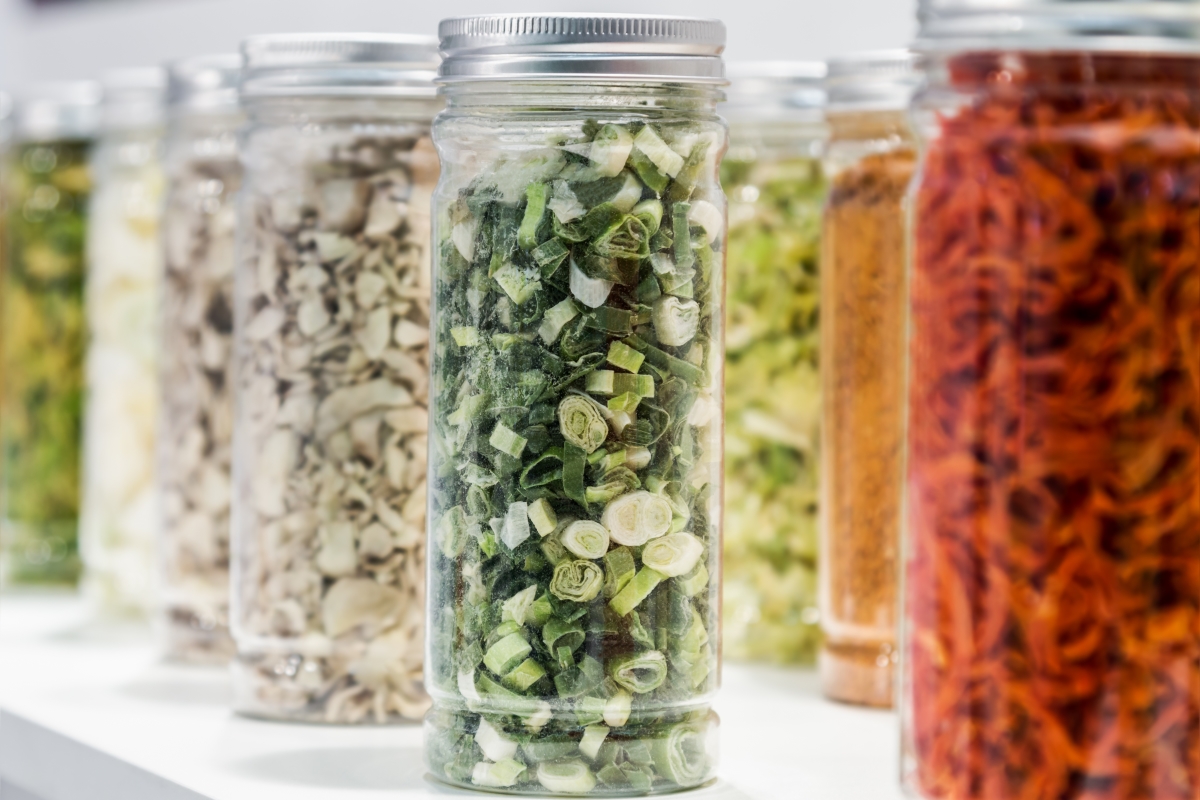
Table of Contents
- How does Freeze Drying Work?
- What’s the Difference Between Freeze-Dried and Dehydrated Food?
- How Long Does Freeze-Dried Food Last?
- Where to Buy Freeze Dried Food?
- Traditional Freeze Drying Methods
- Freeze Drying Food in a Home Freezer
- Freeze Drying Food with Dry Ice
- How to Build a Freeze Dryer
- Using a Home Freeze Dryer
- Food Preservation Methods
- Preparedness
Freeze-dried food is making its way into more grocery stores and home pantries than ever. Contrary to what you might assume, most people don’t use it as lightweight camping food, and most average suburbanites aren’t hoarding it in back closets. (Though if 2020 taught us anything, it’s that having emergency food on hand isn’t a bad idea.)
Believe it or not, most people that buy freeze-dried food at the store are just using it for everyday meals…because it’s tasty.
A few decades ago, freeze-dried food was only sold as a novelty, and I remember my parents buying me freeze-dried astronaut ice cream at a ball game as a kid. Everyone got a kick out of it, and though it was tasty, no one took it seriously.
Who needs freeze-dried food besides actual astronauts?
Fast forward a few decades later, and freeze-dried food is incredibly popular with regular home cooks, and parents are tossing handfuls of freeze-dried fruit into their kid’s lunches as a special treat.
Trader joes sells packs of freeze-dried food right alongside their dehydrated banana chips and raisins. And most grocery stores carry freeze-dried strawberries, raspberries, and other fruits because they’re used by so many bakers these days.
They add incredible flavor to baked goods without the moisture that makes muffins, bread, and cookies soggy.
Freeze-dried food holds its shape and quickly rehydrates without losing the flavor, texture, and appearance of fresh food.
On the other hand, Dehydrated food loses its shape and develops a rubbery texture that won’t rehydrate nearly as well. Since it’s heated as it dries, some of the sugars carmelize in fruit, and meat, cheese or egg proteins change, meaning that it’ll never be the same again.
Though freeze-dried food is delicious and handy to have in the pantry, both for everyday cooking and emergencies, it can be expensive. I’ll walk you through different ways to freeze dry food at home, from the traditional methods used in the Andes to freeze-dry potatoes to home-built options, and finally, small freeze dryers for home use.
I’ll be honest, using an actual freeze dryer is by far the best option, and though they’re an investment, they should pay for themselves in less than a year of regular use.
How does Freeze Drying Work?
Freeze drying is a way to dry foods at low temperatures. In a home freeze drying machine, the food is frozen, and then a vacuum pump lowers the pressure in the chamber. At low pressure, ice turns to gas in a process known as sublimation.
Early in the process, the ice acts as a scaffolding to help the food hold its shape and texture during the freeze-drying process. Later on, once all the water has been removed, the food still retains its shape, size, and texture.
Freeze drying also happens occurs in nature, outside of a vacuum chamber.
In the arctic, animals like seals and penguins that die are sometimes naturally freeze-dried as arctic winds first freeze and then slowly dry the meat. It’s an archeological phenomenon, but the preservation works the same way, and specimens are preserved indefinitely.
Humans also freeze dry food, and the tradition goes back to the pre-colonial period in the Andes, where potatoes have been freeze dried for at least a thousand years.
What’s the Difference Between Freeze-Dried and Dehydrated Food?
Since freeze drying works at low temperatures, sugars and proteins within the food remain unchanged. Add water, and they’ll rehydrate easily, and the food will taste more or less as it did before freeze-drying.
Dehydration relies on heat evaporation of water, and that heat changes the food in the process. Sugars in fruits slowly caramelize, proteins slowly cook (or overcook if they’re already cooked), the food shrinks and takes on a rubbery texture.
Some foods rehydrate well after dehydration, like dried carrots. Other foods don’t dehydrate well, and they won’t ever be the same.
Freeze drying, on the other hand, works well for just about any food. Anything from freeze-dried meat to Freeze-dried fruit, even freeze-dried cheesecake…it’s all delicious.
The only things that don’t freeze dry well are very high fat or high sugar foods that are low moisture anyway. Things like peanut butter, chocolate, and honey. Those happen to have a long shelf life on their own, so freeze-drying isn’t really necessary anyway.
How Long Does Freeze-Dried Food Last?
While dehydrated food tends to last 2 to 3 years at most, freeze-dried food maintains peak quality for decades. If stored properly, freeze-dried food should be unchanged for 25 to 30 years, perhaps longer.
I had the opportunity to test this when I bought a few “antique” cans of freeze-dried food at an estate sale. When I opened the sealed no. 10 cans, the freeze-dried apple slices were absolutely delicious after 17 years in storage.
They were as good as the day they were preserved, and I rehydrated them and made an apple pie that fooled my husband. He honestly thought I’d made it with fresh apples, and it would have been hard to pick out the freeze-dried version in a blind taste test.
Where to Buy Freeze Dried Food?
If you’re curious and you’ve never tried freeze-dried food before, I’d suggest trying freeze-dried food before you try your hand at making your own. You can sometimes find freeze-dried food in the grocery store near the dehydrated fruit; at least, that’s where it’s kept in our local stores. I’ve actually found the quality to be really variable with commercially freeze-dried food, which makes sense…it’s only as good as the food that goes in.
Freeze-dry fruit that’s underripe or flavorless, and that’s the way it’ll come out. The best freeze-dried food I’ve had comes from Valley Food Storage, and I actually did a blind taste test with my kids. They could pick out the Valley Food storage freeze-dried fruit every time.
If you’re curious, I did a comprehensive review of the best emergency food companies on the market in 2021, after the kerfuffle of 2020 really changed the market. Just about all of them produce freeze-dried food for convenience, flavor, and long shelf life. Though the freeze-drying process is the same, some of the foods are much better than others.
Whether you’re freeze drying at home or purchasing ready-made freeze-dried food, quality matters. The result is only as good as the quality of the food that goes into the freeze-drying machine.
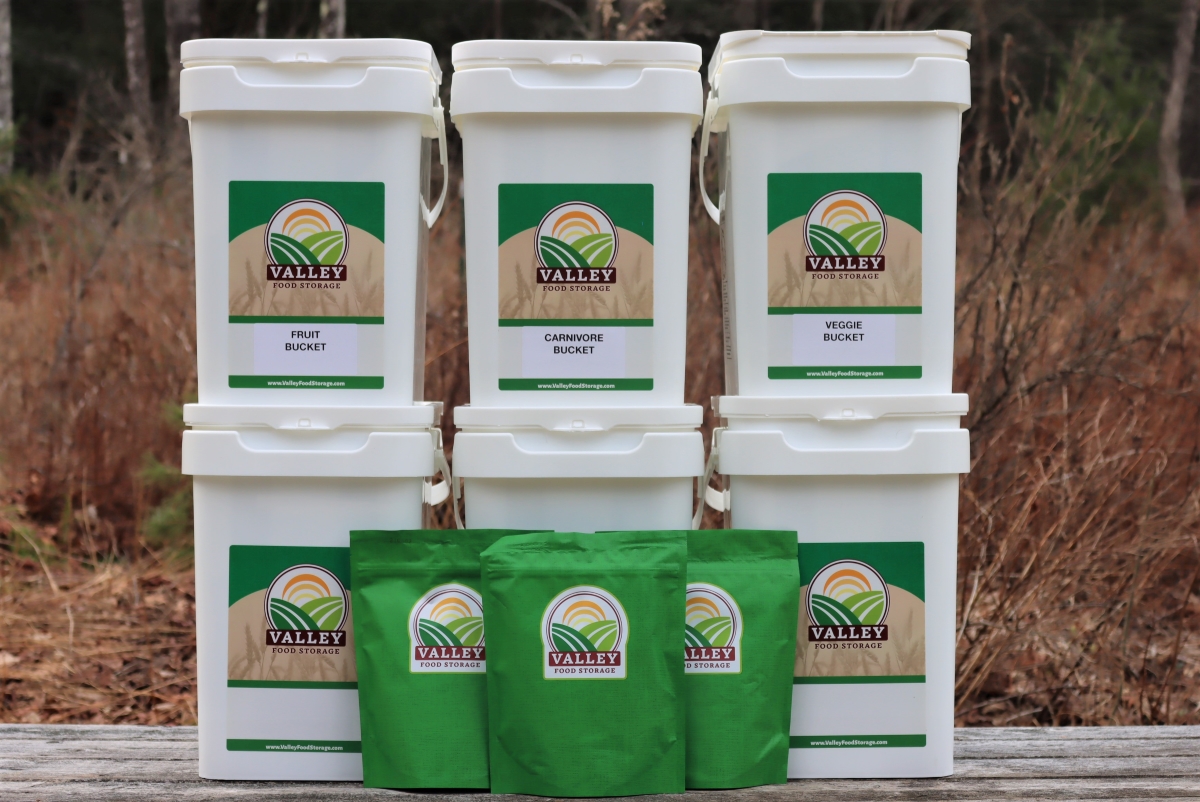
Traditional Freeze Drying Methods
The oldest documented use of freeze-drying for food preservation comes from South America, namely the Peruvian Andes. Potatoes are harvested in the late autumn, as temperatures in the high mountains are dipping below freezing.
Left out overnight, the potatoes freeze, and then during the day, they dry in the intense high-altitude sun. They use a freeze-thaw cycle that’s a bit like the freeze-thaw cycle we see here in Vermont during the maple sugaring season, with freezing temperatures overnight followed by sunny warm days.
After 3 days of freezing overnight and then thawing during the day, the local women “dance” barefoot on the potatoes. This helps strip off the potato peels and press out moisture. The freeze/thaw cycle continues for another 7 days, and the potatoes are walked/danced on each day in the sunlight and naturally re-frozen at night.
From start to finish, the process takes around 10 days. The finished product is known as Chuño, and it’ll store for decades without further preservation. (Just like modern machine processed freeze-dried food.)
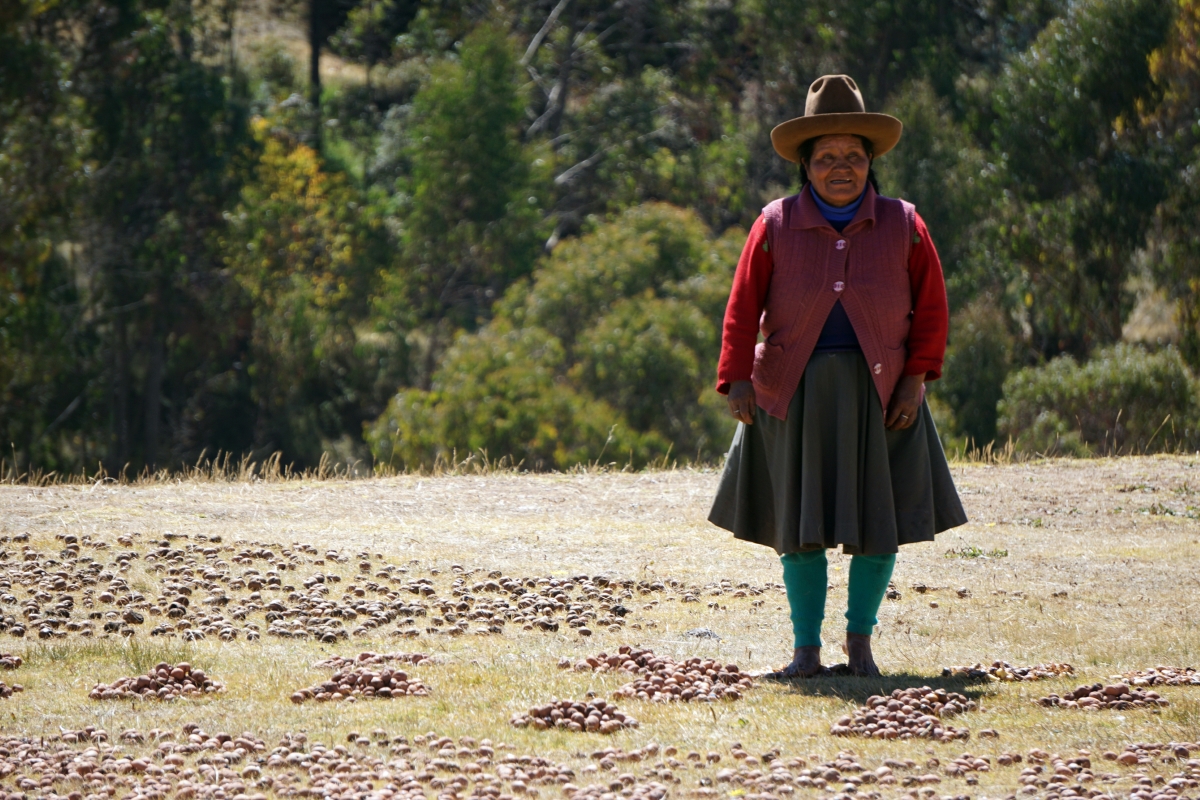
I missed the right weather in the fall, so I decided to try this method during our spring freeze-thaw cycle in March.
The potatoes froze overnight and then thawed during the daylight hours. I gave them a quick (and gentle) barefooted dance each day, and I even placed a box fan on an extension cord nearby to encourage good airflow. Sadly, no luck. There won’t be any Vermont-made Chuño anytime soon.
Doing a bit more research, I learned that a particular variety of Peruvian potato is used, so that may be a factor. But I also found that they do this with other roots and tubers, namely a variety of edible Lilly tuber native to their region. That implies that it could work with other types of starchy vegetables.
Beyond that, they have low pressures at high elevation that may also help to freeze-dry the tubers, working as a vacuum chamber in a way. This is traditionally done at altitudes around 15,000 feet on the Andean Altiplano. Temperature cycles are also more intense there than they are here.
During the potato freeze-drying season, “the diurnal cycle of temperature is very wide, with maximum temperatures in the order of 12 to 24 °C (54 to 75 °F) and the minimum in the order of −20 to 10 °C (−4 to 50 °F).”
This may be a case where specific environmental conditions allow for freeze-drying, but that’s not to say it can’t occur in other places. As I already mentioned, it does occur naturally in the arctic. They use a similar process in Norway to preserve fish en-mass by slow drying it in the winter months as well.
I honestly think this process warrants more testing, especially if you happen to live at a high altitude with a good freeze-dry cycle in the autumn months and dependable gentle winds.

Freeze Drying Food in a Home Freezer
So, in theory, you can freeze dry food in your home freezer. This can happen on its own occasionally when food isn’t properly sealed, and it’s forgotten in the freezer for a long time.
At one point in my childhood, we found a pint of ice cream shoved to the back of the freezer, and the lid had slipped off. It’d been there for god knows how long, and without a lid, it’d slowly freeze-dried into astronaut ice cream all on its own.
It does happen…but it takes forever. Many months, and in that time, the food picks up flavors from the freezer and gets freezer burn at the same time. It’s kinda nasty…
Some places on the internet will tell you that you can freeze dry food on a tray in the freezer in as little as a week, but it’s just not true.
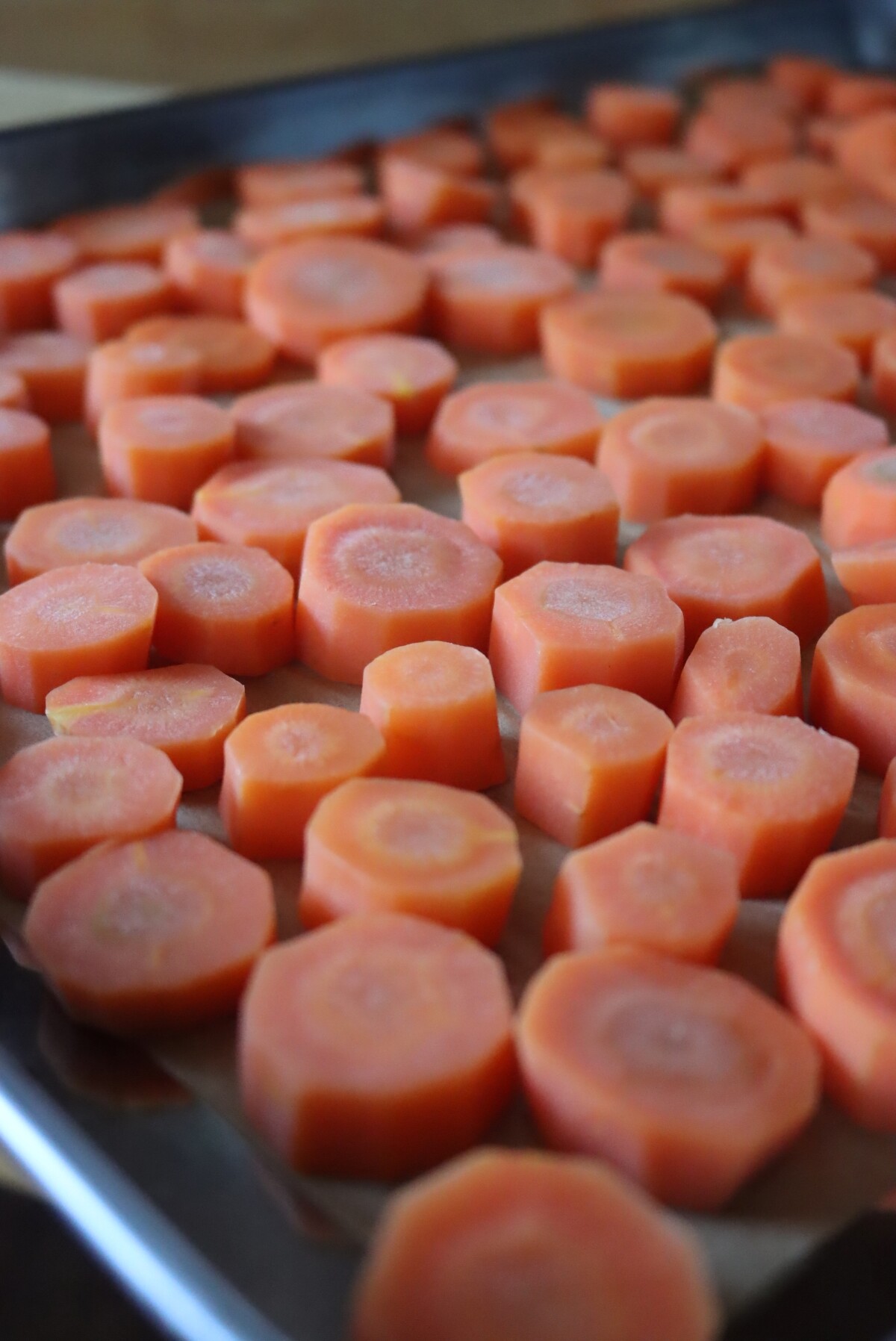
We freeze a lot of vegetables here at home, and sometimes when I’m flash freezing them on a tray (so they don’t stick together), I forget them in the freezer. A week, two weeks, sometimes a month goes by before I remember to get them into a bag. They’re the same as they were when they went in and definitely not freeze-dried.
I forgot a tray in one of our freezers for 3 months one time, and while the food was a bit freezer burned, it wasn’t anywhere near freeze-dried.
Don’t believe me? Watch this experiment where a woman tries to freeze dry strawberries in the freezer by leaving them in there uncovered for 3 weeks:
It’s possible that if you had a fan or some kind of dehydrator in the freezer that it’d work eventually, but it’s in no way an efficient process. You’re going to be running that freezer for weeks or months before you get a tray or two of freeze-dried food without a freeze-drying machine.
I’ve seen other people suggest freezing the food, then placing it in a closed container in the freezer with desiccating silica gel. While that has a better chance of working, it’s not exactly a practical solution for preserving food by freeze-drying.
(And quite frankly, might not be food-safe?)
Freeze Drying Food with Dry Ice
So now maybe you’re thinking, what about freeze-drying food with dry ice?
Dry ice is frozen CO2, and it’s very cold. It’s available at party stores and big-box retailers and usually sells for about $1 per pound.
There are instructions on the internet for freeze-drying with dry ice, and all say the same thing…but none of them have actually tried it.
- Start by placing the food in a plastic bag, so it’s not in direct contact with the dry ice, but leave the bag open so moisture can escape.
- Place the bag in a styrofoam cooler outdoors and drill holes in the cooler lid so moisture and CO2 can escape. (Don’t do this indoors, you can suffocate from the CO2 filling up an unventilated room.)
- After 24 hours, the food should be freeze-dried.
Does it work? No.
First off, it takes about 24 to 36 hours to freeze dry food with a home-built freeze dryer using a vacuum pump (that method’s discussed next). It’s a much more efficient process, using electricity and much colder temps. There’s no way a cooler is going to accomplish the same thing faster.
I tried it, and no, it doesn’t work.
Reading through forums online, it looks like quite a few people have also tried it, and while the food froze as expected, it didn’t dry at all. Some things, like apple slices, are actually carbonated from being store in a high CO2 environment. That makes sense, you can actually carbonate grapes by storing them in a bottle with dry ice, and some home brewers use CO2 to quick carbonate beer without a kegging setup.
Beyond that, dry ice evaporates quickly, and you’d need many, many pounds to keep it slowly evaporating for 24 hours. That implies a huge cooler and not a whole lot of food inside. It also means at least $20 to $30 in dry ice to freeze dry a handful of food. Not exactly practical.
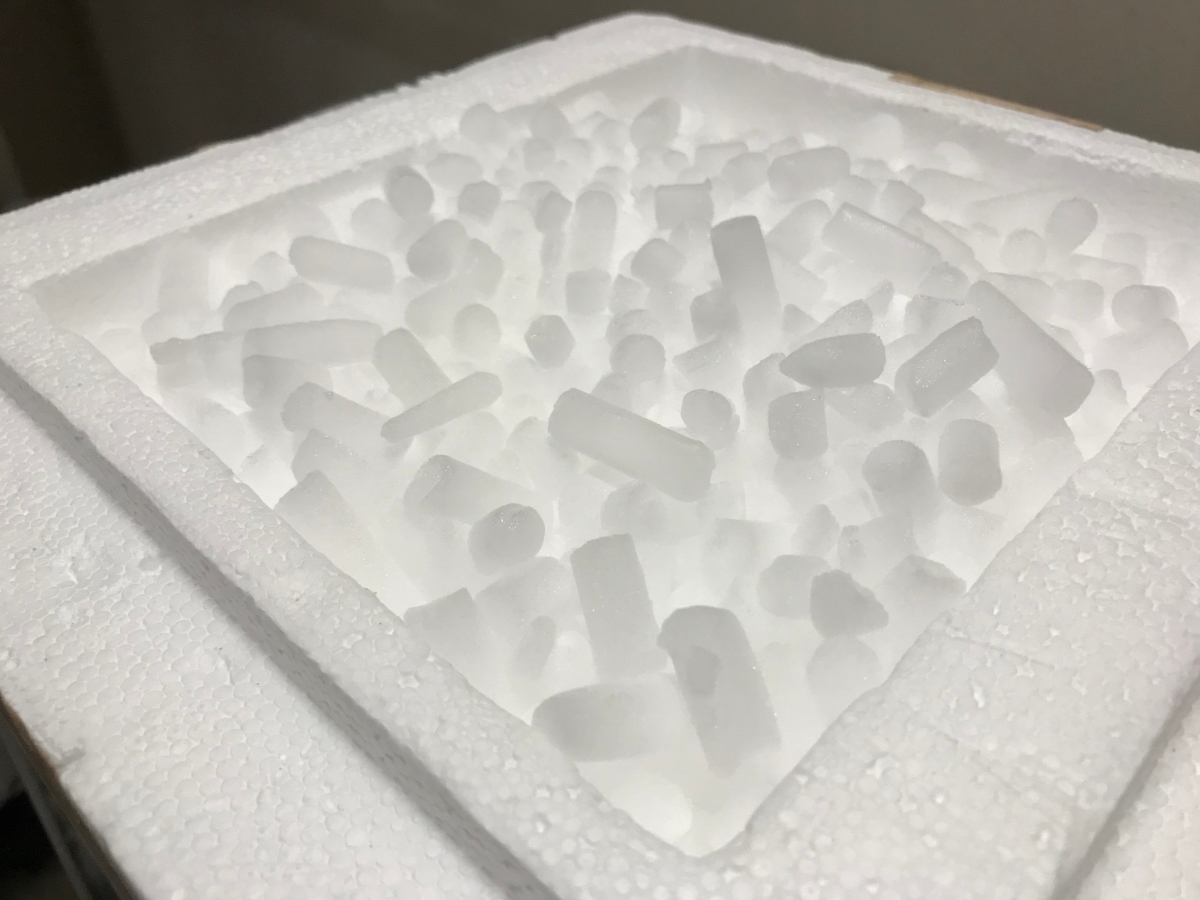
How to Build a Freeze Dryer
Actually building a home freeze dryer is honestly easier than you think, provided you’re incredibly handy with tools. The problem is, it’s expensive to operate (lots of dry ice), and the drying chamber is comically small.
It’s good for scientific applications where you’re freeze-drying a small amount of something for an experiment, but 24 hours of work and a cartload of dry ice is hardly worth it for a cup of freeze-dried strawberries.
If you’re curious how it works, this video explains the process in detail using readily available parts that you can purchase online for about $300.
There are actually a number of homemade freeze dryer tutorials online, and all work on a similar principle.
- Small Vacuum Chamber Method – This method’s simpler to set up but has an even smaller batch size.
- Pressure Canner Vacuum Chambers – Using pressure canner bodies as vacuum chambers gets you a bit more space, but they’re around $400 each, plus a vacuum pump. This system is well over $1000 to build unless you can find second-hand pressure canners for less (which is hard to do).
- DIY Large Volume Freeze Dryer – This one, I’ll admit, is pretty intense and has a large capacity. With a welder, condenser, and a lot of stainless steel, you could build something like this that’d get the job done. It’s an impressive feat of DIY, but you’ll need a lot of tools, equipment, and know-how to get the job done. The total cost is at least $2,000 with metal and machinery, plus a few thousand dollars in tools if you don’t already have a fully equipped welding shop.
They create a cold chamber for condensing liquid, then place the frozen food in another chamber. Connect the two with a vacuum pump and keep everything cold with dry ice for 24 to 36 hours.
This method uses a good bit of electricity since the vacuum pump is running for many hours. It also requires a lot of dry ice and manual tending to keep everything cold the whole time.
The per batch cost is probably around $1 to $2 for electricity and $10 to $20 for dry ice. The problem is, batch sides are incredibly small in all of these home-built systems. Even the biggest ones can only freeze-dry a cup or two of food. (Unless you’re investing several thousand dollars to weld up a huge stainless chamber, as they do in the last video I linked to.)
Since they cost anywhere from $300 to $2000 to build, it’s not actually a cost savings when you think about all the manual operation time and per batch costs. Definitely a cool party trick though, and a great way to teach science to homeschoolers (or impress your friends).
Assuming you can do it safely, without burning anyone on dry ice or blowing the place up.
Using a Home Freeze Dryer
If you’ve read this far, you already have a pretty decent idea of how freeze-drying works. The home freeze dryers you buy actually are pretty similar to the DIY freeze dryers show in the videos above.
They’re all integrated into a single elegant unit that looks a bit like a washing machine, but it’s actually a freezing chamber with a super-efficient low temp condenser that gets the food very cold. A vacuum pump then creates low pressure in the chamber and pulls the water from the food.
To operate, you put the food in on trays and then select the cycle. It’ll have you select whether you’ve pre-frozen the food before putting it in and whether it’s a liquid (like milk or eggs) or a solid like fruit, vegetables, meat, or cheese.
The cycle will run, and sensors will determine the food’s moisture level and shut off the machine automatically when it’s finished.
Pretty sleek, right?
While home freeze dryers are incredibly efficient self-contained units, they come at a cost. Small units are just over $2000, and the largest model is around $3,500.
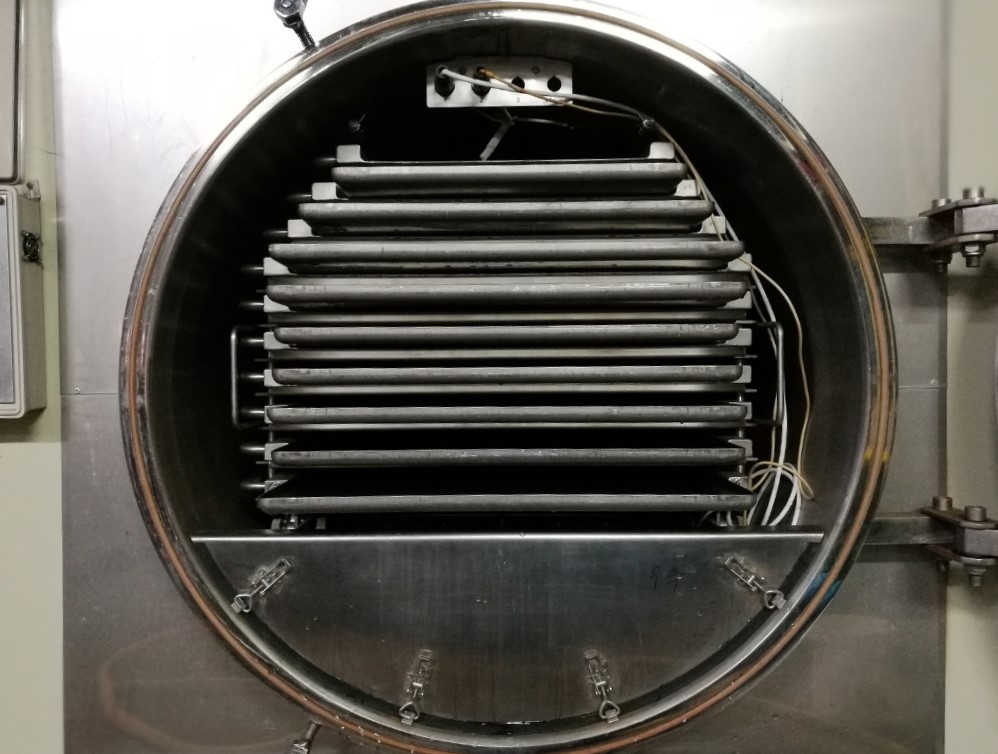
Are Home Freeze Dryers Worth the Cost?
In theory, they pay for themselves in the first year of use, assuming you would have purchased freeze-dried food instead of making your own. For example, it costs about $75 for a #10 can of freeze-dried beef, but you can make it yourself for about $10. That includes buying the beef, electricity costs for running the freeze dryer, and vacuum bags to store the freeze-dried food.
On average, you can make your own freeze-dried food for about 20% of the cost of purchasing ready-made freeze-dried food. That assumes you’re purchasing the ingredients rather than growing them yourself. If you’re preserving homegrown produce, electricity and storage costs are about 5% of the cost of purchasing ready-made freeze-dried food.
Keep in mind that a high-quality freeze-dried one-year emergency food supply for one adult costs about $5,600. The largest capacity freeze dryer costs about $3,400, and the smaller freeze dryer models, which are better suited to one person, cost considerably less (around $2,200). In theory, you’d still have enough money to buy and freeze-dry a year’s food supply for less than you would have spent buying it.
Since the machine are built to last, you’ll get many years of use out of the machine after it pays for itself in the first year. That assumes that you use it regularly…
If you’re only planning to eat a few freeze-dried snacks a year, or you just want days, weeks, or months of long-term storage food to keep in the back closet, then it’s much more cost-effective to just buy freeze-dried food.
At my house, we grow and preserve thousands of pounds of food per year. I put it up by canning and dehydrating, but freeze-dried food is more nutritious, has a longer shelf life, and tastes a lot better. We’re actually doing some renovations to our house this year, and we’re planned in a space for a home freeze dryer.
I hope to have some detailed freeze dryer tutorials for you soon, but for now, I’m still practicing cooking with freeze-dried food using buckets from valley food storage. They’re tasty, and my kids love the novelty of cooking their own camping meals, both indoors and out.
Food Preservation Methods
Looking for more home food preservation guides?
- How to Freeze Vegetables (A to Z Guide)
- Beginners Guide to Water Bath Canning
- Beginners Guide to Pressure Canning
- Beginners Guide to Lacto-Fermentation
- Root Cellaring for Beginners (with and without an actual root cellar)
Preparedness
Preparedness goes beyond just storing food…
- How to Can Water for Long-Term Preservation
- Best (and Worst) Survival Food Kits
- Best Survival Seed Banks
- Survival Gardening: Our Real Life Dry Run
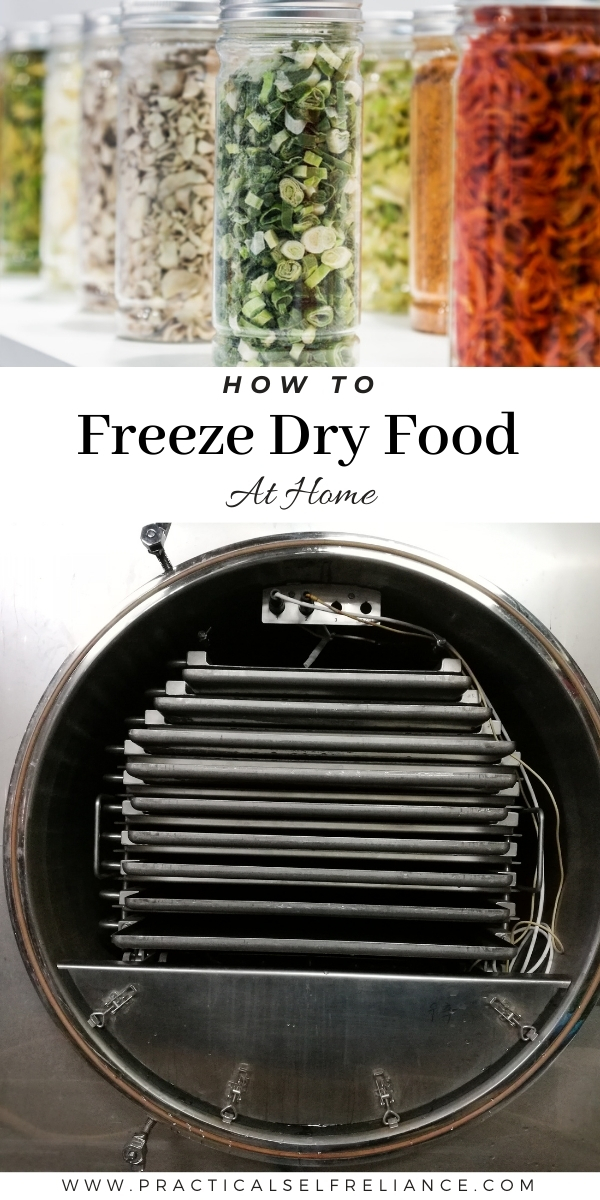
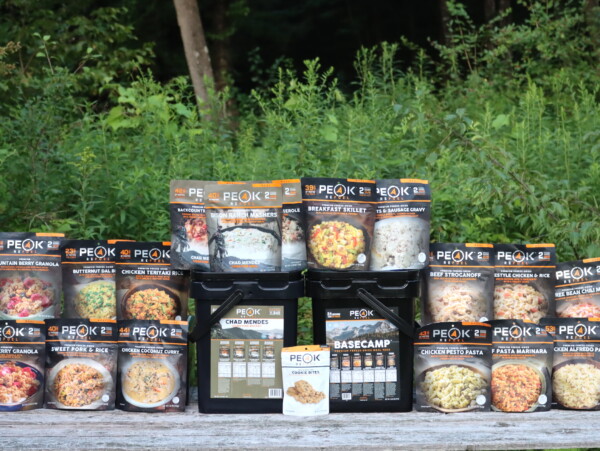
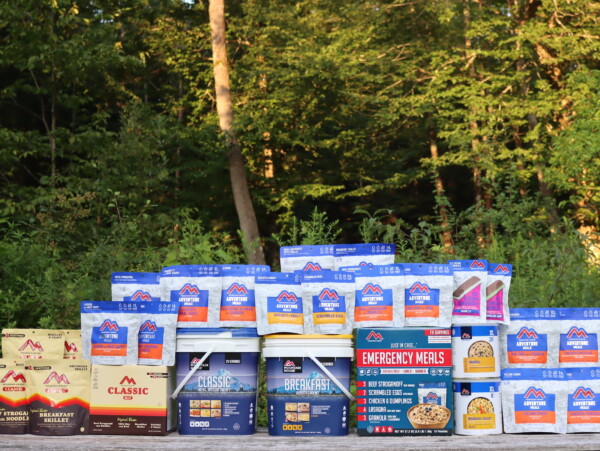
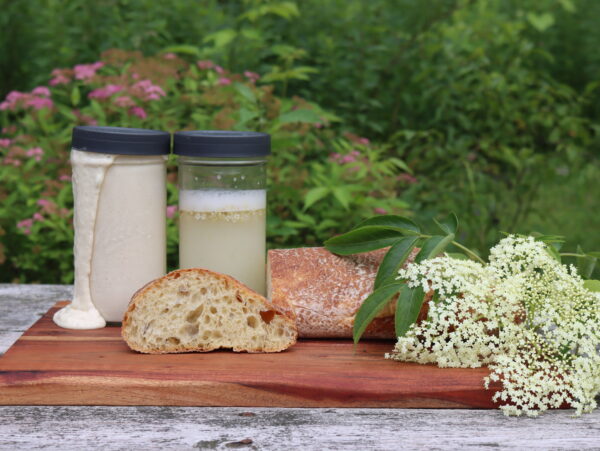
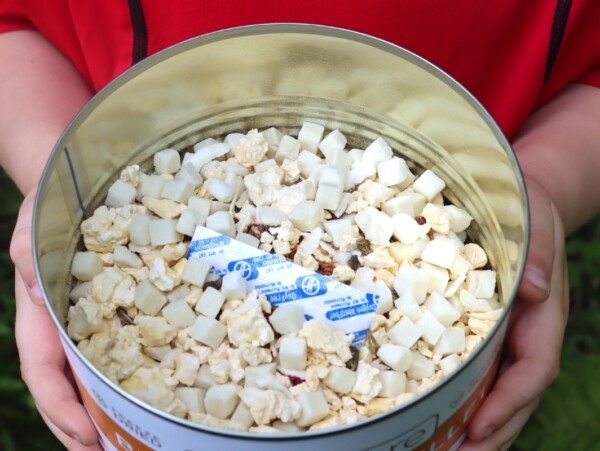










I want to freeze some legumes, like red beans. Do you think it will have a negative effect on their taste and nutritional value, or will it not cause any negative changes, and I can easily combine them with other ingredients and cook?
Freeze drying beans works out really well. I’d suggest fully cooking them first, as you’d use them in recipes. They rehydrate really well. Enjoy!
What a great article!
I prefiously dehydrated a lot of food & we just bought a freeze dryer. Can I ‘re-dry’ the dehydrated food in the freeze dryer to preserve it longer? Some of it is a year or so old. I’ve been unable to find the answer to my question.
No, that won’t be effective. The reason why the freeze dryer works the way that it does is because it dehydrates the food while it’s in its frozen state. Once you have dehydrated something you can’t go back to the original state. I would just work on using up what you have dried and freeze dry fresh foods now for the future.
So in a nut shell you need a vacuum chamber that keeps the food frozen the only thing i did not see addressed is how much vacuum has to be applied to the food that will determine how or what the vacuum chamber can be made of as the freezing part is easy. or am i making it to simple as putting a vacuum chamber in the freezer with a tube to expel the vacuum exhaust.the big question is the min vacuum needed to get the job done?
I think there is a chart in the first video for the “Small Vacuum Chamber Method” which shows the temperature and vacuum levels.
Too much back and forth with the side comments which made it too easy to loose track rather than cutting to the chase with the actual instruction for the various methods. I just got lost and did not really learn the way from start to finish an all out instruction on actually completing a actual freeze dried product. I would have preferred that you had condensed your article to an A,B,C,D TYPE OF INSTRUCTION TO FOLLOW WITHOUT PUTTING ME TO SLEEP, YOUR COMENTS SECTION PRINTS SO SMALL AND LIGHT WHERE I CAN BARELY SEE OR READ IT SO I COULD NOT REALLY PROOF READ THIS TO CORRECT SPELLING, SORRY.
YOU ARTICLE ON BEST EMERGENCY FOODS WAS ON THE OTHER HAND VERY INFORMATIVE ANDTEUE HELPFUL. WELL DONE THANK YOU
We appreciate your feedback. This was meant to be more of an overview article. We do have a couple of other freeze dryer posts on the website that might be more helpful and I’m sure we will have more posted as we go along. Unfortunately we can’t do anything about the size of the print in the comments. I’m not sure what kind of device you are using but a laptop or desk top will probably make it easier to read. Thanks again for the feedback.
Do you know how much energy pull there is from home freeze driers? we are planning to build off grid and I don’t know if it would be viable to have a freeze drier running on a fairly minimal solar power system. Thanks – you have taught me a lot about home brewing and always love finding information on your pages.
You’re very welcome. We’re so glad you’re enjoying the blog. I’m not sure of the answer to that. It probably depends on the model and the manufacturer. I would contact them directly. They should be able to tell you.
I happen to have at home an ultra low freezer that goes as low as -80 Celsius (-112 Fahrenheit). Would it be good for freeze drying foods?
I’m not sure of the benefits of an ultra low freezer but freeze drying involves not just freezing food but it also involves removing moisture from the food after it is frozen through a vacuum which is created in the food chamber.
Thanks for the article. I love following what you actually try out and seeing the research behind your articles. We are waiting on our FD to arrive so we can preserve our harvests. Can’t wait to try out FDing all the chicken stock taking up space in the freezer. I’m really looking forward to seeing your articles on your freeze drying adventures. Thanks Ashley!
You’re very welcome. We’re so glad you enjoyed the article.
hello. I recently subscribed to your newsletter and am very glad I did. Have you ever canned in a instapot?
Thanks for subscribing. Instapots have not been tested as safe for pressure canning. You need to use a pressure canner.
Hello!
I have probably read 100 of your articles and usually have nothing to say, you kind of did everything. In this case I think I could come up with an easy, low cost, home freeze drying tool. My version would not be sleek or all enclosed, but it would leave options for a modular or self customized upgrade.
I put this idea on my list of ideas.
So far I have 8 patents on manufacturing tricks, so I’m not a dufus.
I would DEFINITELY need someone testing my builds like you do though. Try it one way . . .try it another . . . take notes. Probably take a few months of low key work to figure out unless I have to order parts from overseas.
Thanks for your writing.
If you could come up with something there’s a HUGE market out there. Right now there’s only one option for home freeze-drying, and they’re way behind filling orders at the moment. Could use a little healthy competition! If you do work on one, let me know how it goes, I’d love to see your progress.
Thank you for the article as it was very enlightening.
The basics of sublimination are to freeze the item and then to deep vacuum to remove the moisture.
Is it possible to do this in two steps inexpensively?
First using household freezer (set very cold) to freeze the food item.
Then place in deep vacuum chamber to remove moisture.
What is different about freeze dryer machine that would improve the process?
Thanks
That should work, but you’d need to keep the item frozen during the vacuum phase which takes 18+ hours. That’s really all a freeze dryer is, just a freezer that gets things really cold and keeps them cold while the vacuum chamber works. The homemade ones are exactly that, just a way to cool during the vacuum process.
Got our Harvest Right last October and we use it three to five times a week. After a short learning curve, it has been excellent. So much less labor intensive than canning. And better than freezing for that matter. We bulk purchased some foods, mostly meats, from our local Coop. And glad that we did as prices have started to rise. Now our garden produce has been our focus and we couldn’t be happier. I was even able to send some meals to some senior relatives for very low postage and don’t have to worry about spoil age or breakage. I also foraged a great deal of herbs, medicinal and culinary and put these thru the FD (freeze dryer). This will come in handy this winter making herbal products. We are also looking at making our own raw dog food. So much healthier than dried kibble. And less expensive to boot.
I recommend it if you raise your own food. Best investment ever!
Thanks so much for sharing.
I have been reading on the pros of freeze drying food but have never read such an in depth article on both the pros and cons of this method of food preparation. No where have I read anything at all in regards to pricing of these units such as ready made vs. D I Y. I thank you very much for all your time and effort researching the various methods/ feasible ideas. I also think as per your suggestion buying a few ready made freeze dried products and experimenting cooking with them prior to diving in head first and purchasing a unit is a very clever notion!
Thank you again Ashley
Yvonne
You’re very welcome. So glad you enjoyed the post.
Thank you so very much! Everything you write about is not only full of great info, but it’s enjoyable to read! I would never have bothered reading about freeze-drying, if written by a science nerd who liked using big words!
So again, I thank you….because, you’ve given me several things to think about before taking the plunge into buying a freeze-dryer for myself.
Wonderful, so glad it was helpful to you!